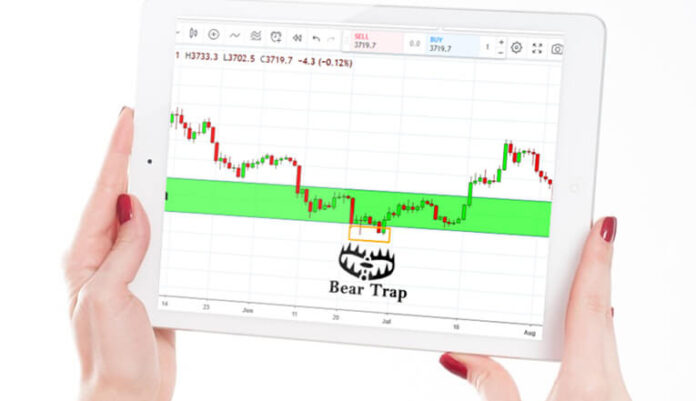A bear trap is a situation when traders put in a short position when the price of a currency pair is falling, only for the price to reverse and move higher.
Bearish traders think the recent price action signals that an uptrend has ended when it actually has NOT.
Instead of declining further, the price stays flat or the uptrend resumes.
A bear trap results in a false trend reversal when the price is in an uptrend.

How it Works?
Traders, usually institutional traders, who “set” the bear trap do so by selling the asset until it fools other traders into thinking its upward trend has stopped or is dropping.
Bear traps tempt traders into entering short positions based on the expectation that price will continue to fall which never happens.
The gullible and/or amateur traders who fall into the bear trap will often go short, thinking the price will drop further.
They start shopping online for lambos thinking they’ll be rich soon.
At that point, the institutional traders who set the trap will buy at a lower price and will release the “trap”.
This counter move produces a trap and often leads to sharp rallies.
Eventually, they are forced to exit out of their short positions.
To exit a short position requires buying, so this buying pressure will cause the price to rise even further.
The bears are caught in a trap.
Once the bear trap is released, the price usually resumes its uptrend.
If this article seems useful to your then please click the like button below. You can also share your valuable feedback or ask questions in the below comment section. Also, subscribe to our newsletter for trading-related updates.







